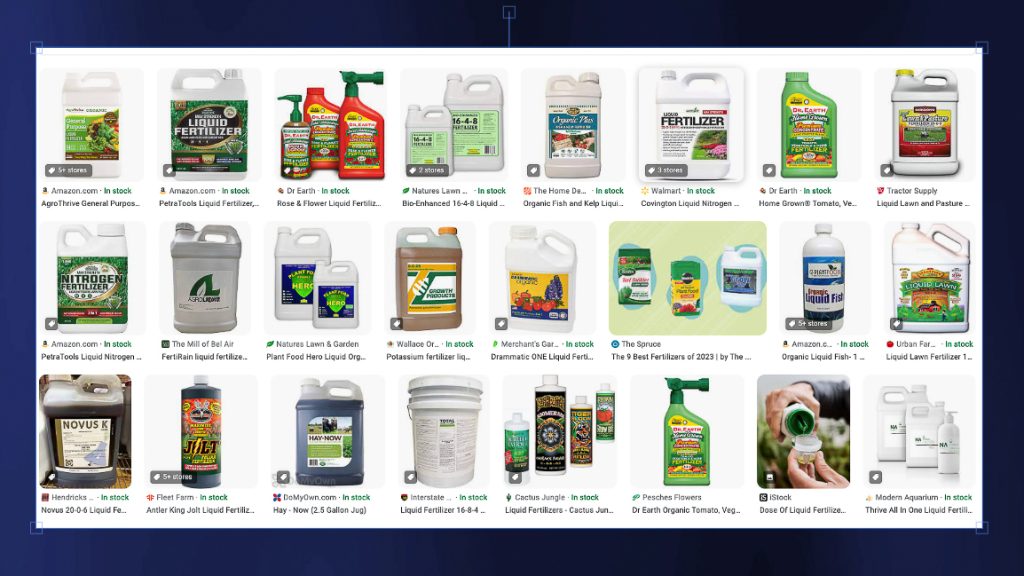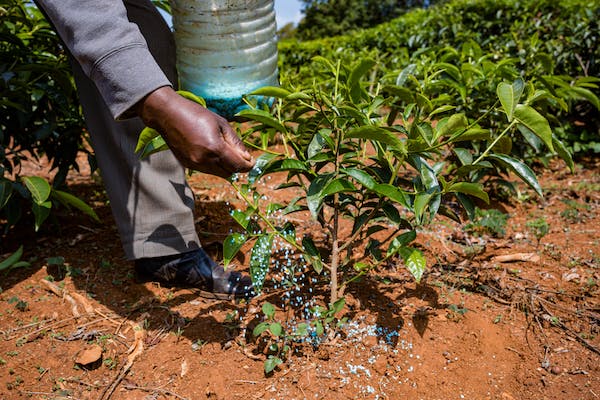Gardening in Hawaiʻi with Tom Timmons: Choosing a fertilizer for your lawn and plants
I never realized that plants were fussy eaters until I was lollygagging in the garden shop rather than cleaning the garage like I had promised my wife.
There were two aisles of shelves piled with every imaginable size of bag, box and bottle. There was all-purpose fertilizer, liquid fertilizer, lawn fertilizer, tomato fertilizer, orchid fertilizer and on and on, and on. There were more types of fertilizer than Carter’s Little Liver pills.

I’m not one to make snap decisions. Besides, my feet were hurting. I grabbed several boxes and small bags of fertilizer and wandered over to the lawn furniture. I dropped down into a comfortable chaise lounge and began reading the labels.
Yep, it was far worse than I first suspected. It didn’t take long before I was on information overload. When this happens, I have a sure-fire method of taming the demon: I ponder the plethora of information with my eyes closed. Closed eyes limits external distractions and helps me focus.
I nearly had everything sorted when a nice young employee nudged me: “Sir, you can’t sleep here.”
I wiped my sand-filled eyes and answered indignantly: “I’ll have you know that I wasn’t sleeping. I was conducting research on the best fertilizer for my garden. I was judiciously appraising and compartmentalizing the glut of minuscule inorganic components found in these commercial specimens to corroborate the veracity of their labels.”
The withering look I received said: “Yah, right, you are just another prevaricating old geezer.”
Guilt and embarrassment convinced me that I should purchase at least one bag of fertilizer before I left.
Here is what I learned while in my reflective, closed-eye inquiry. In general, fertilizers consist of three essential elements: (N) nitrogen, (P) phosphorous and (K) potassium.
Each has a specific use by the plant. Nitrogen promotes leaf growth; phosphorus encourages the development of roots, flowers, seeds and fruit; and potassium, often called potash, improves stem growth, and water and nutrients movement in plants.
This is good general information, but it doesn’t tell how to select the best fertilizer for a specific use. Vegetables require different nutrients than a lawn. Then, just to add insult to injury, I learned that the fertilizer I use should complement the composition of the soil. I never thought I would have to be a matchmaker between soil and fertilizer.
Egad, gardening is tricky. I soon learned that a soil test is the best way to know your soil and which nutrients your vegetables, flowers and lawn need. Your county extension office offers this service. There also are many home test kits available at garden shops and online.
Lawns: A fertilizer that contains a high percentage of nitrogen promotes a thick, green turf of which you can be proud. However, nitrogen is quickly absorbed by grass and is further depleted by water.

Without getting too technical, the lawn may need phosphorous, but usually not much. Phosphorous is relatively stable. Most healthy lawns have an adequate amount of phosphorous in the soil. Excess phosphorous with overwatering or heavy rains can leech into the ecosystem and cause damage. If possible, use a fertilizer that has little or no phosphorus when fertilizing the lawn, e.g. (27-0-2). A non-phosphorus commercial fertilizer will build a lush, green lawn while reducing the impact on the surrounding ecosystem.
Potassium is essential in helping the plant metabolize nitrogen and other nutrients that assure a healthy plant. Low potassium levels often show the same signs as low nitrogen. The grass will become necrotic (yellow) and be less dense. Most commercial fertilizers have enough potassium to supply adequate potassium for the soil. The good thing about potassium is that too much will not harm your lawn.
There are several variables to consider about the frequency of fertilizer application on a lawn. Each island of Hawaiʻi has many microclimates with distinct variations in rainfall, temperature and humidity. On the rainier and cooler North shores, it may be necessary to fertilize more frequently than on the drier and hotter West side.
How often? There is not a perfect answer. It is time to fertilize when the grass loses its deep green color, more weeds are invading the lawn (a thick, healthy lawn often chokes out many types of weeds), or mowing is required less often. Most literature recommends fertilizing every 6 to 8 weeks during the prime growing season.
A final word on fertilizing the lawn. There are different schools of thought on mowing or not mowing before fertilizing. Mowing the lawn before fertilizing seems the most sensible. This removes excess grass and allows the fertilizer to reach the soil easier.
Apply the fertilizer during a cool time of the day. Once the fertilizer is applied, you will need to water. Commercial fertilizers need to dissolve before they can be absorbed by the lawn. Caveat! Follow the directions on the bag. Applying too much fertilizer may burn your lawn.
If you’re interested in local research and recommendations on turf care, check out the University of Hawaiʻi’s Turfgrass Management Lab’s website.
Vegetable Gardens: Most gardens have two types of plants: flowering and non-flowering. The best fertilizer to use for each type of plant is easy to determine. The fruit of flowering plants is eaten (tomatoes, cucumbers, eggplants, etc.). The leaves or roots of non-flowering plants are eaten (lettuce, chard, carrots, potatoes, etc.).
Flowering plants require a fertilizer that has a higher percentage of phosphorous that encourages the plant to flower and set fruit. Depending on the product, the numbers will vary. However, you should see something like 3-5-3 or 4-6-3.
Non-flowering plants require a higher nitrogen fertilizer. They don’t, however, need to be as high as the nitrogen levels used on a lawn. Depending on the brand, you will see NPK values of 10-0-5 or 15-5-5. Many local gardeners believe a balanced fertilizer (10-10-10) works best for these plants. To keep your garden eco-friendly, construct barricades around the garden to prevent contamination by the unabsorbed fertilizer from running off during heavy rains.
Liquid and Granular Fertilizers: The next question: Do I use a liquid or granular fertilizer?
This is a complicated question. The short answer is that they both work but in a slightly different way. A liquid fertilizer should not be applied until the plant is established, which is generally two weeks after germination. The liquid fertilizer is immediately available and easily absorbed by the plant.
The plant can absorb a liquid fertilizer through its leaves as well as its roots. For the plant, it is like guzzling a high-caffeine energy drink. Like the energy drink, the effects don’t last long. Liquid fertilizers don’t provide nourishment for more than a couple of weeks. When using a liquid fertilizer, you will need to pay close attention. Either fertilize at regular intervals or wait and fertilize when the plants show signs of nutrient deficiencies. (See handout on Plant Nutrient Deficiencies)
Granular fertilizers are fast or slow release. Both must be dissolved by water before they can sink into the soil. Only then can they be absorbed through the plant’s roots. After applying the fertilizer, it is necessary to water to start the dissolving process. Because the fertilizer granules dissolve at variable rates, their nutrients are available to plants for a longer period of time. Depending on water availability, absorption begins within a few days. Maximum absorption generally occurs in a couple of weeks and then tapers off slowly.
The second fertilizing of vegetables should be applied as a side-dressing when the plant begins to blossom. Loosen the soil in a circular pattern three to four inches out from the stem to the plant’s drip line to a depth of one to two inches. Be careful to not damage the roots. Sprinkle the fertilizer and work into the soil with a trowel or your hand.
It is also easy to apply too much fertilizer and ‘burn’ the plant. There is no Goldilocks’ formula, but usually, not more than one tablespoon of fertilizer per plant evenly distributed in the loosened soil is adequate.
With either liquid or granular fertilize, rain, temperature and plant size are factors that dictate how often to apply fertilizers. With granular fertilizer, every six to eight weeks is the general rule. For liquid fertilizers, every two weeks is usually adequate. As with any chemicals you use in your yard, read the label for the legal guidelines and more in-depth instructions.
Conclusion: I have touched on only the basics of using a commercial fertilizer. There is so much more to know.
As Alexander Pope stated: “A little learning is a dangerous thing,” but the more you know, the more you grow. As for me, I am heading out to the garden shop. If you see a gray-haired geezer resting on a chaise lounge with his eyes closed, know that I am not sleeping but merely reviewing my research data.
References:
Deputy, Jay. 2000. Turf Fertilizers for Hawaii’s Landscapes, TM-13. College of Tropical Agriculture and Human Resources. University of Hawai’i.
Mahfuz, Rahman, February 2022. “Plant Pathology” West Virginia University
Xinxiang Xu, et.al. 2020. Effects of Potassium Levels on Plant Growth, Accumulation and Distribution of Carbon, and Nitrate Metabolism in Apple Dwarf Rootstock Seedlings. State Key Laboratory of Crop Biology, College of Horticulture Science and Engineering, Shandong Agricultural University, Tai’an, China.
Yankee Publishing, Inc., 2022. How and When to Fertilize Your Vegetable Garden.
Editor’s Note: Every other week, Big Island Now will feature a guest gardening column by Tom Timmons. He is a certified Master Gardener respected for his gardening experience, but his views are not necessarily those of the University of Hawai‘i.
Other gardening columns by Tom Timmons:
















